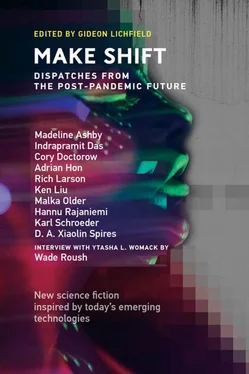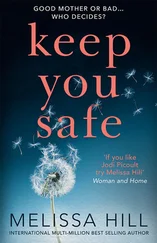It seemed to work with mixed results until a few accidental swallows and choking incidents eroded trust in the technology. Besides the adhesives losing stickiness, people found the masks uncomfortable. They were constantly readjusting and removing them. There were also cases where the epidemic spread despite proper use of the coverings, suggesting the synthetic fibers for the silicone filters weren’t as effective as they thought. It was a mess, and distributors had to recall the devices soon after rolling them out. Hopeful bar owners grumbled and I was distraught.
We went through COVID-19 and -22 when I was young, and were successful with vaccines at each iteration but it took a while. Then came ANVID-33 and -36 and now the GRAVID series. People developed strategies for coping. In the engineering and commerce world, they moved up the holo tech faster than imagined and drone delivery speeds took off.
People also tried Portable Personal Bubbles (PPBs), but that was a celeb fad that failed miserably. They were incredibly expensive and stiff. The wearers couldn’t move far beyond their power source since the battery drained fast. Those who could afford to rent them complained they were hard to manipulate and hot as hell. The batteries kept dying. Celebs said they felt like they were swallowed up by a hippo, moving like molasses, and that they’d prefer to interact through holoscreens rather than wrapped in plastic casing. Some even panicked, having trouble breathing in them.
With PPBs put to rest, GRAVID-37 took a huge toll on the population. Those infected got unexpected rashes as well as respiratory issues and chronic fatigue, and there was no viable solution in sight. Pharmaceutical companies and experts despaired. A viable vaccine was remarkably difficult to achieve and it took a few years.
We’re still waiting for a vaccine for the latest bug, GRAVID-38, and we’re impatient. I, perhaps, am one of the most.
I fiddle with a double jigger, rolling it between my fingers as I think about possibilities, ways forward—quick, safe, and easy measures for people to take to get a drink served.
I look at my jigger, thinking of measuring spirits and shaking drinks as customers look on in rapt anticipation.
Omotenashi.
What if I brought the bar experience to them?
I GATHER PARTS FROM BROKEN CLEANERBOTS AND SERVICE DRONES AND SOMEold machines at the gym. I scavenge more parts from a junkyard nearby. I remember my cleanerbot, the old one from my parent’s house in the countryside, that would bump into things. It had a shaking mechanism to deploy these old aerosol cleaners they sold at the mart. They don’t sell the aerosol cans anymore because of environmental regulations, but our bot still had that shake programmed in. It was a bit outdated.
I give my parents a holocall. It takes them a while before they pick up. They don’t like using these things. Mom picks up as she’s fixing up an ikebana work of art, twisting a sakura branch to the perfect angle, part of her activities in attempting to achieve ikigai. “Just come over and get the antiquated thing. It’s still here. It’s next to a load of your old clothes, chemistry sets, and junk. I don’t think it works though. Just didn’t have the heart to throw it away since I knew you liked it.”
“Liked it! That thing always malfunctioned!”
“Yeah, but didn’t you say you liked the sounds it made?”
Mom has a good memory. I did. The phantom sounds of its gurgling pentatonic melody that played as it shook fill my ears. I’d forgotten about that.
She snaps a branch in half and chucks it behind her. The newest cleanerbot snatches it up. “I’ll send it over. And your old chemistry sets. They’re sitting around here, gathering dust.”
I protest about saving the delivery drone extra work, but she logs out. Oh well, I’ll just throw out the chem sets when they arrive.
After the call, I sketch out designs and order more parts from the hardware holostore, my mind racing.
WHEN MY OLD CLEANERBOT ARRIVES, I CHARGE IT UP. AS THE STRANGE MELODYdrones on, in my mind I see the flowing waves of verdant blades of rice in the paddies, and the heady smell of fermentation in our old shed. I live in that nostalgic space for a moment before I go into plan-execution mode. I say goodbye to our old family cleanerbot and hello to my new tech.
I drill, cut, shave, and attach. I solder and bend. I even add in pieces of my childhood chemistry set—repurposing the durable test tubes. A couple of drones help me out but I do most of the work by hand, enhanced with a home improvement gauntlet that reduces injuries and enhances strength and grip.
It takes me days and I’ve ignored all my calls. I miss five calls from Aimi, two from my parents, and a dozen holonet celeb requests.
I attach a small retractable slab to the front of the metallic figure before me. That will be the counter.
I put powder packets into its compartments and turn it on for a test run. The bot empties packages, mixes, adds water with an attached hose, mixes again and shakes. As it shakes, the floor vibrates and I feel the trembling up through my feet and calves. It tinkles out its strange melody as it pours out the concoction, while another appendage reaches in and grabs a straw and places it gingerly into the cup. A compartment ejects an umbrella and a satsuma. The bot grabs these with the same appendage and adds them to the cup. It places the cup on the metal rack.
The drink stops fizzing and rests.
I take a sip. I grimace. It needs work. The proportions and balance are off. The drink tastes watery and weak. I can still feel the residue of powder and grit on my tongue. The shaking needs more rigor. The satsuma slice falls right onto my lap, as it wasn’t wedged in well to begin with. The bot looks silly with inelegant protruding parts. It needs a shinier coat and better decor.
I put down the drink, wipe my mouth with my sleeve.
My first drink from my first robosake mixologist.
It might be crude, but we’ll get there.
AFTER THE MANY STEPS OF ADDING KOJI, STEAMED RICE, AND WATER AND THENstrained through pressing, my family got crude sake. The liquid was milky and viscous. My mom insisted on clear sake—she wanted to recreate the experience of sipping the refreshing waters of a winter creek.
For that, we had to wait longer. Always the waiting. The crude sake would sit in tanks, filtering, pasteurizing, and maturing. We let the immersed drones do their thing, and waited for the day its aromatic smoothness would grace our taste buds.
Once done, we started the process again for the next batch, the cycle of working and waiting.
AIMI HAS HOOKED ME UP WITH HER NETWORK SO THE FIRST ROUND OF SHARED SAKESocials is with her cycling group. The SKIM-1s (Sake Karakuri Imagination Mixologists), tucked into packages, roll in by air drone. They are gently dropped and the students open the packages in unison as they project themselves on holos. They all delight in the SKIM-1 countenances, cute and doll-like in the karakuri automata tradition of the seventeenth to nineteenth century, but metal and still robot enough not to hit the uncanny valley.
At the request of the SKIM-1s’ vocalizations, the cyclist students sit back down in their seats in different homes. Out of the robot mixologists’ shoulders, a panel opens up and they project a short menu. After taking orders, the SKIM-1s deliver mixes, ripping packets of kwik koji and brisk yeast, throwing in flavor profiles to order and attaching to water pipes to rehydrate within their chest cavities. They dip, stir, and check the solutions. The students all have their holos of each other up and they’re laughing, having a ball.
I can see their legs vibrate as the SKIM-1s do the rigorous shake that activates the flash fermentation mechanism, and this elicits more laughter. The SKIM-1s all emit that same strange melody, which I’ve altered to be more lively than dour, as they pour. They fill up ecologically friendly, molded dried squid cups enhanced with keep-cool tech and then add umbrellas and fruit. From the holos, I see one SKIM-1 overpours and the drink spills. I groan. Its cleaning mechanism activates.
Читать дальше












